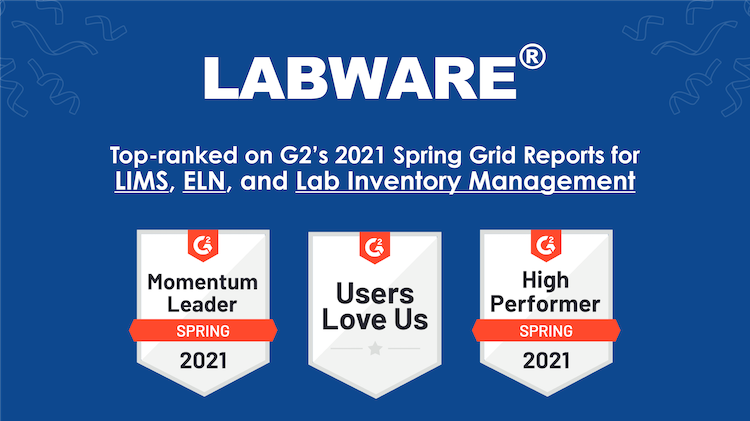
As laboratories consider transitioning to paperless systems, it is crucial to understand the potential risks associated with relying solely on electronic laboratory notebooks and digital data storage. In this blog post, we will delve into various aspects of paperless laboratory risks and discuss how they can be mitigated using advanced technology solutions.
We will explore the vulnerability of data in traditional paper-based laboratories, including threats such as water damage and fire. Additionally, we'll examine the role human error plays in manual data recording and its impact on accuracy. The challenges faced during expansion due to limited scalability and adaptability of paper-based systems will also be discussed.
Furthermore, we will address concerns surrounding security issues related to confidential data storage in physical formats compared to encrypted cloud-based alternatives. Finally, we'll touch upon the environmental implications of extensive paper use within laboratories and emphasize the benefits offered by adopting digital documentation methods for reducing our ecological footprint.
Risk of Data Loss and Damage
One major concern when relying on paper-based laboratory data is the high susceptibility to loss or damage. Various factors, such as water, fire, or physical wear and tear can compromise the integrity of these records. In contrast, a cloud-based Laboratory Information Management System (LIMS) significantly reduces this risk by securely storing all vital information in digital format.
Vulnerability to Natural Disasters
Natural disasters like floods and fires pose a significant threat to laboratories using paper notebooks for data storage. These events can lead to irretrievable loss of valuable research findings and years' worth of work. By implementing an electronic laboratory notebook, you can protect your lab's crucial data from such catastrophes by safely storing it in the cloud.
Physical Degradation Over Time
- Paper Deterioration: Paper records are prone to yellowing, fading ink, tearing pages, and other forms of degradation over time. This makes long-term preservation challenging without proper climate-controlled storage facilities.
- Digital Preservation: Digital LIMS solutions eliminate these concerns by maintaining legible copies that remain unchanged throughout their lifespan with minimal maintenance requirements compared to traditional methods.
- Data Redundancy: Cloud-based systems offer multiple layers of redundancy ensuring that even if one server fails or gets damaged, there will always be another copy available elsewhere within the network infrastructure preventing any potential loss due to hardware failures.
In today's fast-paced research environment, laboratories must prioritize the security and preservation of their valuable data. By transitioning from paper notebooks to an electronic laboratory notebook, you can safeguard your lab's critical information against various risks associated with traditional documentation methods. This not only enhances overall efficiency but also ensures that your research remains intact for future generations to build upon.
The risk of data loss and damage can be mitigated by implementing a secure, digital Laboratory Information Management System. Human error in data recording is another factor that must be taken into consideration when transitioning to a paperless laboratory environment.
Key Takeaway: Transitioning from paper-based laboratory data to a cloud-based Laboratory Information Management System (LIMS) significantly reduces the risk of data loss and damage, as well as vulnerability to natural disasters. Electronic laboratory notebooks also eliminate physical degradation over time by maintaining legible copies that remain unchanged throughout their lifespan with minimal maintenance requirements compared to traditional methods.
Human Error in Data Recording
In traditional laboratories, data is often recorded manually using paper notebooks, which increases the chances of human error. These errors can lead to incorrect conclusions or compromised results that negatively impact research and development efforts. By implementing a Laboratory Information Management System (LIMS), labs can minimize these errors by automating the documentation process and ensuring accurate instrument readings.
Misinterpretation of Handwritten Notes
One common issue with manual data recording is that handwritten notes can be difficult to read or interpret correctly. This may result in miscommunication among team members or even erroneous analyses due to unclear information. An electronic laboratory notebook within a LIMS system provides clear, legible records that are easily understood by all users, reducing the risk of misinterpretation.
Errors in Transcription
Besides illegibility issues, transcription errors also pose significant risks when relying on paper-based documentation methods. When transferring data from instruments to paper notebooks or between different documents, mistakes such as typos or omitted values may occur. A LIMS solution eliminates this problem by directly capturing instrument readings and storing them digitally without any need for manual transcription.
The use of an electronic laboratory notebook not only reduces human error but also offers additional benefits like:
- Data integrity: With digital storage and automatic backups, there's less chance for accidental loss or damage compared to physical paper records.
- Audit trails: A LIMS tracks every modification made within its system so you have complete visibility into who made changes and when they were made - essential for regulatory compliance purposes.
- Easier collaboration: Digital records can be easily shared among team members, streamlining communication and collaboration within the lab.
Incorporating a LIMS into your laboratory operations not only minimizes human error in data recording but also enhances overall efficiency, accuracy, and compliance. By automating documentation processes and providing clear, legible electronic records, labs can significantly reduce the risks associated with traditional paper-based methods.
Data recording flawsdue to human error can be time consuming and costly, thus making the implementation of a paperless laboratory system an attractive option. Maximizing productivity and accuracy requires a thorough evaluation of data retrieval methods to ensure optimal performance.
Key Takeaway: Implementing a Laboratory Information Management System (LIMS) can minimize human error in data recording, misinterpretation of handwritten notes, and errors in transcription. An electronic laboratory notebook within a LIMS system provides clear, legible records that are easily understood by all users while also offering benefits such as data integrity, audit trails, and easier collaboration.
Inefficient Data Retrieval Process
The laborious task of locating relevant information from paper based laboratory records can consume valuable man hours, thereby reducing efficiency. With stacks upon stacks of files, finding relevant data can be a daunting task that consumes valuable time. A digital LIMS system facilitates this process by offering advanced search capabilities, allowing for quick access to pertinent data.
Wasted Personal Hours Searching for Files
In traditional laboratories using paper notebooks, employees often spend countless hours searching through physical documents to find essential information. This inefficient use of time not only reduces productivity but also increases operational costs as staff members are unable to focus on more critical tasks. By implementing an electronic laboratory notebook within a LIMS system, you can eliminate these inefficiencies and optimize your team's performance.
Difficulty Tracking Historical Trends
Analyzing historical trends in lab data is crucial for identifying patterns and making informed decisions about future research or improvements in processes. However, with paper-based systems, tracking such trends becomes increasingly challenging due to disorganized record-keeping and limited accessibility. A cloud-based LIMS solution simplifies trend analysis by consolidating all relevant data into one centralized platform where users can easily visualize changes over time.
Besides improving efficiency in retrieving information from past experiments or tests, transitioning from paper notebooks to an electronic laboratory notebook offers several other benefits:
- Data integrity: Digital records ensure accuracy and consistency across multiple entries while reducing the risk of transcription errors or misinterpretation caused by illegible handwriting.
- Data security: Cloud storage provides robust protection against unauthorized access, theft, or damage compared to physical files that are vulnerable to various risks.
- Collaboration: Real-time data sharing and remote access capabilities enable seamless collaboration among team members across different locations.
In today's fast-paced laboratory environment, adopting a digital LIMS solution is essential for streamlining the data retrieval process and enhancing overall productivity. By transitioning from paper notebooks to an electronic system, you can save time and resources while ensuring accurate record-keeping of vital information.
Organizations should explore the potential of automating their data management to help optimize retrieval time. Moving on, limited collaboration opportunities are another issue that needs to be addressed when utilizing paperless laboratory systems.
Key Takeaway: Transitioning from paper-based laboratory records to a digital Laboratory Information Management System (LIMS) can streamline the data retrieval process, eliminate inefficiencies and optimize team performance. A cloud-based LIMS solution simplifies trend analysis by consolidating all relevant data into one centralized platform while ensuring accurate record-keeping of vital information.
Limited Collaboration Opportunities
Traditional paper-based laboratory data management presents several challenges when it comes to collaboration among team members. These challenges include issues with document duplication, version control, and secure distribution of sensitive information. By implementing a cloud-based Laboratory Information Management System (LIMS), you can overcome these obstacles and enable real-time collaboration across multiple locations while maintaining high security standards.
Inconsistent Versions Leading to Miscommunication
When using paper notebooks or files for recording lab data, there is always the risk of creating inconsistent versions as different team members update the records independently. This inconsistency can lead to miscommunication and errors in interpreting results. An electronic lab notebook provides a single platform for all modifications, making sure that the whole team has access to the latest data in real-time.
Restricted Access Hinders Remote Collaboration
- Physical barriers: Paper records need to be physically present for review or modification by other team members, which may not be feasible if they are working remotely or at different sites.
- Data sharing limitations: Sharing sensitive information through email attachments or photocopies increases the risk of unauthorized access and makes it difficult to maintain version control.
- Lack of simultaneous editing capabilities: Multiple users cannot edit a paper document simultaneously without causing confusion over who made specific changes; this hinders efficient teamwork on complex projects requiring input from various experts.
By adopting a cloud-based LIMS solution, your laboratory can overcome these challenges and enable seamless collaboration among team members. The system allows authorized personnel to access data from any web-connected device, guaranteeing that all stakeholders remain informed and aware of the most recent progress. Additionally, features such as real-time editing capabilities and version tracking help prevent miscommunication by providing clear visibility into who made changes to the data.
Paperless laboratory systems can offer improved efficiency and collaboration opportunities, but they also come with the risk of limited access to information. Therefore, it is important to consider how real-time quality control measures are implemented in order to avoid delays in identifying non-conformances or repeat tests.
Key Takeaway: Traditional paper-based laboratory data management presents several challenges when it comes to collaboration among team members. However, by implementing a cloud-based Laboratory Information Management System (LIMS), you can overcome these obstacles and enable real-time collaboration across multiple locations while maintaining high security standards. With an electronic laboratory notebook, all updates are made within a single platform that tracks changes in real-time, ensuring everyone on the team has access to the most up-to-date information.
Lack of Real-Time Quality Control Measures
Traditional pen-and-paper methods for laboratory data management often fall short when it comes to implementing real time quality control measures. This can lead to delays in identifying non-conformances and an increased likelihood of having to repeat tests, both of which negatively impact the overall efficiency and accuracy of lab operations. By contrast, a modern Laboratory Information Management System (LIMS) offers several advantages that address these issues.
Delayed Identification of Non-Conformances
Paper-based systems do not provide instant feedback on test results or procedural compliance, making it difficult for lab personnel to quickly identify deviations from established protocols. Delays in detecting non-conformances can lead to a squandering of effort and resources, as well as data integrity being put at risk. With a LIMS solution in place, automatic validation checks are performed throughout each stage of analysis, alerting users immediately if any inconsistencies arise during testing procedures. This enables prompt corrective action and helps ensure accurate outcomes.
Increased Likelihood for Repeat Tests
The lack of real-time monitoring inherent in manual documentation processes increases the risk that errors will go unnoticed until after experiments have been completed, at a point where costly retesting may be necessary. A digital electronic laboratory notebook (ELN), integrated with LIMS technology, minimizes this risk by providing continuous oversight into ongoing activities while also maintaining detailed records that facilitate troubleshooting efforts should problems occur.
- Better Data Integrity: The use of automated data capture techniques reduces the potential for human error associated with manual entry methods.
- Streamlined Workflows: Real-time alerts and notifications enable lab personnel to address issues as they arise, minimizing the need for time-consuming retesting.
- Improved Compliance: LIMS systems can be configured to enforce adherence to industry standards such as Good Laboratory Practice (GLP), ensuring that all activities are conducted in accordance with regulatory requirements.
Incorporating a cloud-based LIMS solution into your laboratory operations not only enhances overall data quality but also promotes more efficient workflows by providing real-time insights into ongoing experiments. By eliminating many of the limitations associated with traditional paper notebooks, this technology helps ensure accurate results while reducing the likelihood of costly repeat tests.
The lack of real-time quality control measures can have serious implications for the accuracy and reliability of test results, making it essential to invest in reliable LIMS solutions. Moving on from this topic, let us now explore the environmental impact that paperless laboratories may have.
Key Takeaway: Traditional pen-and-paper methods for laboratory data management lack real-time quality control measures, leading to delays in identifying non-conformances and an increased likelihood of having to repeat tests. A modern Laboratory Information Management System (LIMS) offers advantages such as automatic validation checks, continuous oversight into ongoing activities, and the ability to enforce adherence to industry standards like Good Laboratory Practice (GLP), ensuring accurate results while reducing the likelihood of costly repeat tests.
Environmental Impact
Continuing to rely on paper-based laboratory data not only poses risks to the integrity and security of vital information but also contributes significantly to the environmental burden. By transitioning from traditional pen-and-paper methods to a digital Laboratory Information Management System (LIMS), laboratories can reduce their ecological footprint while improving overall efficiency and accuracy.
Deforestation due to increased demand for paper
The production of paper requires large amounts of wood, water, and energy resources. According to the World Wildlife Fund (WWF), approximately 30% of global forest cover has been cleared or degraded due in part to the increasing demand for products like paper. Switching from physical notebooks such as paper notebooks used in labs, towards an electronic solution like an ELN, helps conserve forests by reducing this demand.
Waste management challenges
- Paper waste: The disposal of outdated or unnecessary paper records adds strain on already overburdened landfills and recycling facilities. A study published in ScienceDirect estimates that around 26 million tons of office paper are discarded annually in the United States alone.
- Ink cartridges: In addition to generating significant quantities of non-biodegradable plastic waste, ink cartridges contain toxic chemicals that pose hazards when improperly disposed of. The Environmental Protection Agency (EPA) provides guidelines for proper disposal to minimize these risks.
- Energy consumption: The production and transportation of paper products require substantial amounts of energy, contributing to greenhouse gas emissions. By adopting a cloud-based LIMS solution, laboratories can help reduce their carbon footprint by minimizing the need for physical storage and transportation of documents.
Incorporating digital solutions like LIMS technology not only guides laboratory processes but also promotes sustainable practices that benefit both the environment and business operations. By taking the necessary steps to transition towards a cloud based LIMS solution, we can help ensure a greener future for scientific research and development.
Given the increased demand for paper, laboratory information management systems can have a negative environmental impact due to deforestation. Inadequate data security procedures can lead to potential hazards which must be taken into account in order to maintain the privacy and accuracy of sensitive patient information.
Key Takeaway: Transitioning from paper-based laboratory data to a digital LIMS can reduce the environmental impact of laboratories by reducing deforestation, waste management challenges and energy consumption. Adopting cloud-based LIMS solutions streamlines laboratory processes and promotes sustainable practices that benefit both the environment and business operations. By doing so, we can help ensure a greener future for scientific research and development.
Inadequate Data Security Measures
One of the major risks associated with paper-based laboratory data is its vulnerability to unauthorized access or theft. Unlike digital records, which can be encrypted and protected by password security measures, paper files lack such safeguards. This leaves sensitive information exposed and susceptible to misuse. By implementing a cloud-based LIMS solution, laboratories can ensure that their valuable data is securely stored and accessed only by authorized personnel.
Increased Risk of Data Breaches
Paper records are easily accessible to anyone who gains physical entry into a lab or storage facility. In contrast, an electronic laboratory notebook (ELN) within a LIMS system provides multiple layers of protection against potential breaches, including encryption technology and user authentication protocols. Moreover, cloud-based solutions offer additional security features like regular backups and disaster recovery plans in case of unforeseen events.
Difficulty in Tracking Unauthorized Access
With traditional pen-and-paper methods for recording vital data in labs, it becomes nearly impossible to track any unauthorized access or tampering attempts on sensitive documents effectively. On the other hand, modern LIMS systems maintain detailed logs that record every instance when users interact with the system, making it easy for administrators to monitor activity closely.
- Better control over user permissions: A comprehensive LIMS allows you to assign specific roles and privileges based on individual job responsibilities, ensuring that each team member has appropriate access levels while preventing unnecessary exposure of confidential information.
- Audit trails: Digital audit trails created by ELNs help keep track of all changes made within the system - providing clear evidence if there's ever any suspicion about possible misconduct or fraud involving your lab's data.
- Remote access security: Cloud-based LIMS solutions enable remote access to lab data, but they also incorporate robust security measures like multi-factor authentication and secure VPN connections to prevent unauthorized intrusion.
In today's world where cyber threats are constantly evolving, it is crucial for laboratories to adopt advanced technology that offers comprehensive protection against potential risks. By transitioning from paper notebooks to a cloud-based LIMS system, labs can significantly enhance their overall data security posture while ensuring the integrity of their valuable information.
Data security must be treated with utmost importance to guarantee the protection of sensitive data; neglecting this can lead to drastic outcomes. On the other hand, a paperless laboratory also presents challenges when it comes to regulatory compliance due to difficulty demonstrating traceability and lengthy audits.
Key Takeaway: The use of paper-based laboratory data poses significant risks, including inadequate security measures, increased risk of data breaches, and difficulty in tracking unauthorized access. By implementing a cloud-based LIMS solution with encryption technology, user authentication protocols, and detailed logs for monitoring activity closely - laboratories can enhance their overall data security posture while ensuring the integrity of their valuable information.
Hindered Regulatory Compliance
When laboratories rely on manual documentation methods, maintaining compliance with regulatory standards such as Good Laboratory Practice (GLP) becomes increasingly challenging. A comprehensive LIMS solution automates many aspects of compliance management, ensuring adherence to industry regulations while simplifying audit processes.
Difficulty Demonstrating Traceability
In a paper-based system, it can be difficult to demonstrate traceability and maintain an accurate record of all laboratory activities. This lack of transparency makes it harder for labs to prove they are following proper procedures and meeting the necessary requirements. With a cloud-based LIMS solution, every step in the process is documented electronically, providing clear evidence of traceability and allowing for easy access during audits or inspections.
Time-Consuming Audits
Auditing a lab that uses traditional pen-and-paper methods can be time-consuming due to the need to manually review extensive physical records. In contrast, digital records stored within a LIMS make it much easier for auditors to quickly assess whether the lab is adhering to required guidelines by searching through electronic files efficiently. This not only saves time but also reduces potential errors caused by misinterpretation or oversight when reviewing handwritten notes.
Leveraging Electronic Laboratory Notebooks (ELNs) within your LIMS:
- Faster audits: Digital data storage allows auditors quick access and efficient navigation through historical records without sifting through stacks of paper notebooks.
- Better traceability: ELNs provide a clear, unambiguous record of all laboratory activities, making it easier to demonstrate compliance with regulatory standards.
- Improved data integrity: Electronic records eliminate the risk of transcription errors and ensure that all information is accurate and up-to-date.
Incorporating an electronic laboratory notebook (ELN) within your LIMS can significantly improve regulatory compliance by streamlining documentation processes, enhancing traceability, and simplifying audits. By transitioning from paper notebooks to an electronic system, you'll be better equipped to meet industry requirements while also improving overall efficiency in your laboratory environment.
Key Takeaway: A paperless laboratory can pose risks to regulatory compliance, traceability, and audits. However, incorporating an electronic laboratory notebook (ELN) within a LIMS solution can improve documentation processes, enhance traceability, and simplify audits by providing quick access to digital records that eliminate the risk of transcription errors.
FAQs in Relation to Paperless Laboratory Risks
What are the disadvantages of electronic lab notebooks?
An electronic lab notebook (ELN) has some drawbacks, including dependency on technology and software compatibility, potential data loss due to system crashes or hardware failure, cybersecurity risks such as hacking or unauthorized access, and a learning curve for users transitioning from paper-based systems. However, ELNs offer numerous benefits that often outweigh these concerns.
What are the consequential risks of running a paper-based laboratory?
Paper-based laboratories face several risks: data loss due to natural disasters or physical degradation; human error in recording and transcription; inefficient data retrieval processes; limited collaboration opportunities; lack of real-time quality control measures; environmental impact from deforestation and waste management challenges; inadequate security measures leading to breaches; hindered regulatory compliance with traceability requirements.
What are the risks in testing laboratories?
Risks in testing laboratories include inaccurate test results caused by human error or equipment malfunction, cross-contamination between samples affecting integrity, improper storage conditions impacting sample stability, insufficient staff training leading to procedural errors, inadequate documentation compromising traceability and regulatory compliance efforts (source). These issues can lead to financial losses and reputational damage for organizations.
What is harmful to paper-based records?
Paper-based records are vulnerable to various threats: exposure to moisture causing mold growth or ink smudging (source); temperature fluctuations resulting in brittleness over time (source); fire or water damage; physical wear and tear from handling; insect infestations causing irreversible destruction (source). These factors can lead to data loss, making paper records less reliable than digital alternatives.
Conclusion
As we have seen, paper-based laboratories come with a range of risks and challenges that can impact productivity, accuracy, security, compliance, and the environment. By adopting digital solutions such as cloud-based LIMS technology, labs can reduce human error, increase efficiency and accessibility to data while improving security and regulatory compliance.
It's clear that the benefits of going paperless are numerous. Not only does it help mitigate risks associated with traditional record-keeping methods, but it also offers a more sustainable solution for our planet. As leaders in laboratory informatics software development and implementation since 1987, LabWare has been helping organizations worldwide optimize their lab operations through innovative digital solutions.
Contact us today to learn how LabWare's LIMS platform can help you minimize Paperless Laboratory Risks!
















